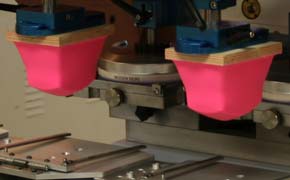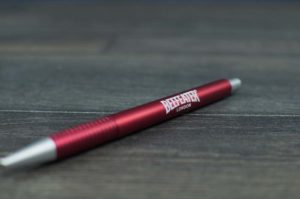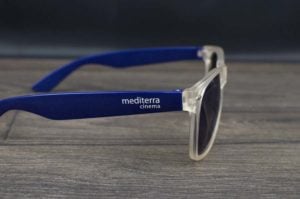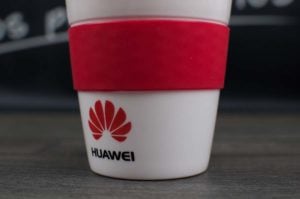pad printing

This process is done using a silicone pad that picks up the image (in ink) from a flat plane and transfers it to a variety of surfaces (flat, cylindrical, spherical, compound angles, textures, concave surfaces, convex surfaces).
The image is engraved on a flat printing plate and the ink floods this plate. After manipulating the surface, ink is left only in the engraved area of the image. A silicone pad is pressed down onto the engraved plate and collects the ink.
The image once on the silicone pad is pressed onto the product to be printed and releases the ink as a clean film. The range of inks and solvents used makes it possible for the inks to adhere to the surface after releasing the ink from the pad which is clean again to repeat the process.
Pad printing is done on items such as: pens, computer mice, anti-stress balls, etc.
In favor:
- Large runs can be printed in a very quick time.
- It allows to print designs with details and very small letters.
- Can be stamped on curved surfaces.
Against:
- Not suitable for short runs
- The printing area is limited to the size of the pad. They are usually not very large.




